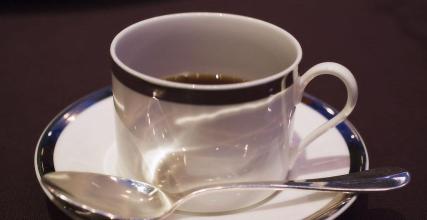Introduction of Brazilian boutique coffee beans with slightly sour taste
Mogiana in the northeast of Sao Paulo province (north to south Minas) is also dominated by shaded bourbon, which is ranked as the three major boutique producing areas in Brazil along with Serrado and South Minas. Well-known estates in South Minas include Hope Manor and Montague. The famous "Datra Manor" and "Highland Manor" groups also have several large estates in Serrado and Mojiana. These four cup test permanent winning estates have become the treasures of the town shops of South Minas, Serrado and Mojiana. Since 1999, the manor that has won the bid for "extraordinary cup" of national treasure beans in Brazil, with South Minas as the largest number, is the backbone of Brazilian boutique coffee. As for the north-central mausoleum of Minas (Chapada de Minas) is not a boutique producing area, mostly for general commercial beans. To sum up, South Minas, the Midwest Mesa of Minas (Serrado) and the higher forest areas in the southeast can all be called the boutique producing areas of Minas province, Brazil is flat, with coffee farms mostly at an altitude of about 600-1000 meters, suitable for growing shade-free Kaddura, New World and Kaduai, also known as exposed coffee (Sm CofFee). This is the main reason for the lack of aroma of Brazilian coffee (but when the altitude is more than 1100 meters, the taste of exposed coffee will improve, comparable to bourbon. See Chapter 4 of this book). Fortunately, 90% of Minas province is more than 300 meters, and 25% is between 600 and 1500 meters, which is the highest province in Brazil on average. In particular, the Serrado platform and South Minas in the central and western part of Minas are mostly above 1100 meters above sea level, with undulating foothills, rich landforms, obvious dry and wet seasons, large temperature differences between day and night, and rich micro-climate, which are suitable for cultivating elegant bourbon and yellow bourbon. It has naturally become the main producing area of Brazilian boutique coffee. In addition, farms in the Minas Southeast Mountain Forest region (Mata de Minas) above 1000 meters above sea level can also produce high-quality coffee Brazilian coffee accounts for 30 to 35 percent of the world's annual output value, ranking first in the world, but it is a pity that none of the Brazilian beans can be called state-of-the-art coffee. There are coffee trees all over the mountains, distributed in the southern part of Brazil. Compared with other coffee-producing countries in Central and South America, Brazil is significantly lower, with farms mostly about 600-1000 meters above sea level, and even South Minas, Serrado and Mojiana, the three major boutique producing areas, rarely exceed 1300 meters. Brazil's terrain is too flat and monotonous for coffee cultivation, and it lacks a microclimate that can give coffee rich taste factors, so there are many kinds of Kaddura, New International and Kaduai Brazilian coffee, which are suitable for growing without shade. It is difficult to say that it has any extra flavor, no outstanding advantages and no significant disadvantages, most of which are medium-sour and taste lubricated. The main thing is gentle and smooth, mellow and sweet, its softness makes it mix with other coffee beans, the taste will not change much. And rich in oil quality contrast. So Brazilian coffee beans are best mixed with other coffee beans to make espresso, which forms a golden foam on the surface of espresso and gives the coffee a slightly sour taste and a long finish. In fact, all the blended coffees run by big coffee roasters contain some bird shit coffee from Brazil.

Important Notice :
前街咖啡 FrontStreet Coffee has moved to new addredd:
FrontStreet Coffee Address: 315,Donghua East Road,GuangZhou
Tel:020 38364473
- Prev

Taste of Nicaraguan Coffee with fertile soil introduces Matagalpa
Dipilto is one of the smallest municipalities directly under the Central Government in Nicaragua, covering an area of 106square kilometers. 90% of the population, 5000 of the residents live in rural areas. Dipilto is famous for its pine forests, warm climate, religion, people's loyalty and its high-quality coffee. Coffee cultivation is one of the traditions maintained by the local people of Dipilto. The fertile soil is full of organic matter
- Next

Introduction of flavor and taste characteristics of Kenyan boutique coffee beans with rich and perfect taste
The increase in the number of Kenyan coffee is obvious, from 1969 to 1970, when 800000 bags were exported, and between 1985 and 1986, the output increased to 2 million bags. The general yield is stable at 1.6 million bags, with an average yield of about 650kg per hectare. Even before coffee prices skyrocketed, the average price of coffee in Kenya had been rising. Prices in 1993-1994 were 50% higher than they were 12 months ago. Price
Related
- Detailed explanation of Jadeite planting Land in Panamanian Jadeite Manor introduction to the grading system of Jadeite competitive bidding, Red bid, Green bid and Rose Summer
- Story of Coffee planting in Brenka region of Costa Rica Stonehenge Manor anaerobic heavy honey treatment of flavor mouth
- What's on the barrel of Blue Mountain Coffee beans?
- Can American coffee also pull flowers? How to use hot American style to pull out a good-looking pattern?
- Can you make a cold extract with coffee beans? What is the right proportion for cold-extracted coffee formula?
- Indonesian PWN Gold Mandrine Coffee Origin Features Flavor How to Chong? Mandolin coffee is American.
- A brief introduction to the flavor characteristics of Brazilian yellow bourbon coffee beans
- What is the effect of different water quality on the flavor of cold-extracted coffee? What kind of water is best for brewing coffee?
- Why do you think of Rose Summer whenever you mention Panamanian coffee?
- Introduction to the characteristics of authentic blue mountain coffee bean producing areas? What is the CIB Coffee Authority in Jamaica?

